Everyone, have you heard of the yokai called Nekomata? This legend, where a cat that has lived a long life transforms into a yokai, its tail splitting into two and gaining the ability to speak human language, is intriguing not only to cat lovers but to many others as well. Additionally, there is another similar being known as the Bakeneko. What are the differences between Bakeneko and Nekomata? Furthermore, what kind of legends surround these creatures? This time, let’s delve into the mysterious world of Nekomata and Bakeneko, which is surprisingly not well-known
What is a Nekomata?
Nekomata are mystical cat yokai that appear in folklore, legends, and ghost stories throughout Japan. In ancient times, the average lifespan of a cat was very short, and it was rare for a cat to live more than ten years. Therefore, it was said that “a cat that lives for ten years will have its tail split in two and will begin to speak human language.” Furthermore, it was believed that cats that lived for more than fifteen years would acquire mysterious powers. Cats that became Nekomata were feared as beings that brought misfortune and deceived people.
The stories of Nekomata can be broadly classified into two categories. The first is of cats that transformed while living as pets. The second is of cats that transformed while living in the mountains. The appearance of Nekomata varies by region and literature, but they are most commonly depicted with their tails split into two. The legend of cats transforming into Nekomata after living a long life is found not only in Japan but also in China.
Characteristics of Nekomata
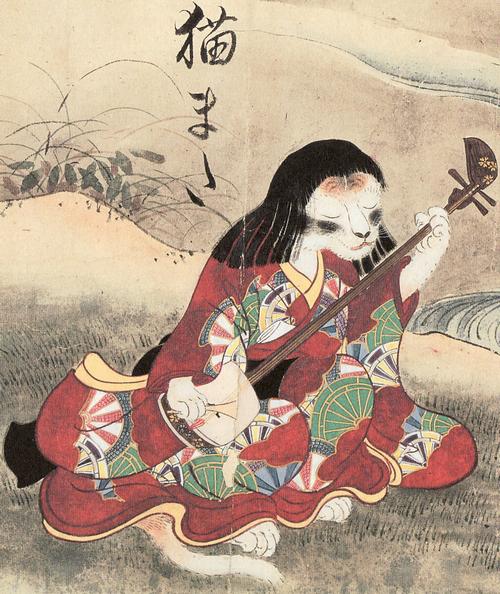
Nekomata are known as yokai that domestic cats transform into when they become old. Their most distinctive feature is their tails, which split into two. It is believed that by living a long life, they acquire mysterious abilities, such as understanding and speaking human language.
Nekomata are often depicted standing on two legs, holding a hand towel and dancing. Cats with yellow or black fur are particularly believed to be prone to becoming Nekomata. Among them, cats with black fur are said to possess especially strong abilities. Furthermore, larger cats are also believed to be more likely to become Nekomata.
At What Age Does a Cat Become a Nekomata?
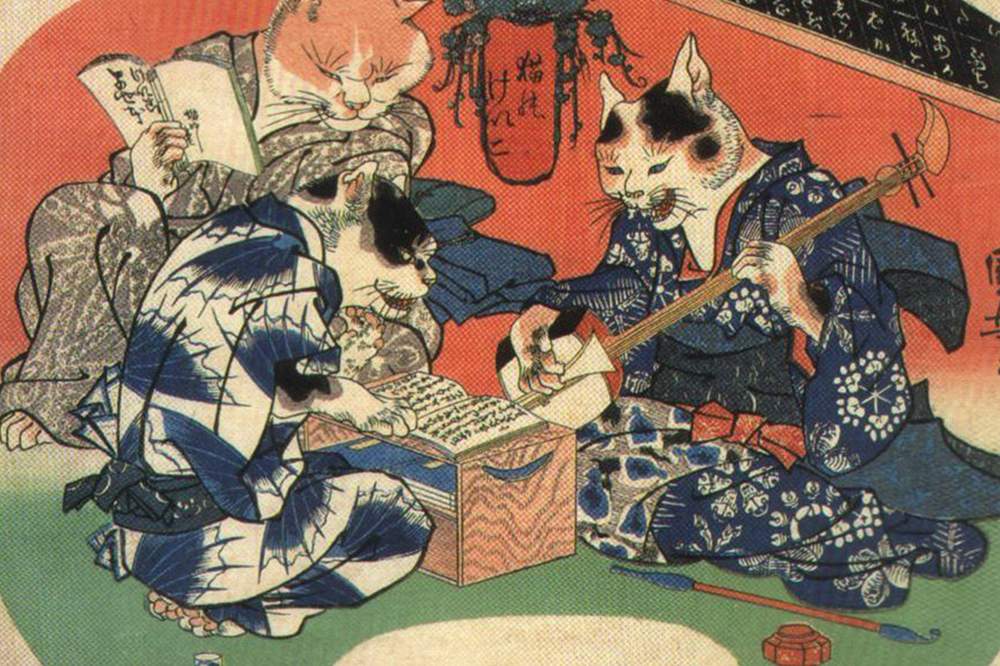
According to folklore, cats that live a long life transform into Nekomata, but what is the specific age? While there are various theories, it is roughly believed that a cat becomes a Nekomata after living for 20 years. The age at which a cat transforms into a Nekomata varies by region: in Okinawa, it is 13 years; in Nagano and Ibaraki, it is 12 years; and in Hiroshima, cats that live for more than 7 years are said to have their tails split and attack their owners.
By the way, a 20-year-old cat is equivalent to a 96-year-old human. This is quite old. According to a 2015 survey by the Pet Food Association, the average lifespan of a modern cat is 15.75 years. While there are cats that live for more than 20 years today, they are significantly beyond the average lifespan, making them more susceptible to diseases and infections, so care is needed.
In the legends, there are stories of long-lived cats transforming into Nekomata and attacking their owners, but in reality, older cats tend to understand their owners more deeply and provide comfort. Whether a cat has a long tail or a short one, let’s cherish and care for them for a long time.
Differences between Nekomata and Bakeneko
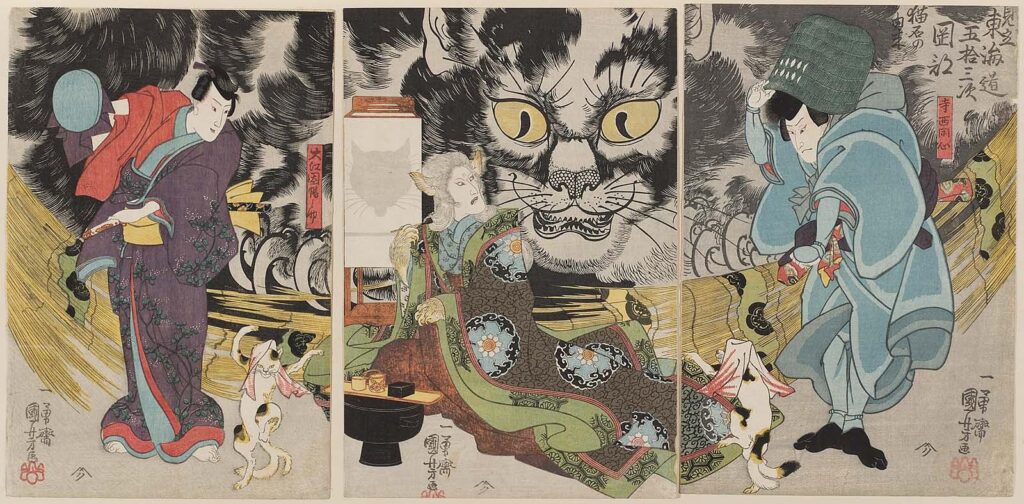
Both Nekomata and Bakeneko are known as cats that have transformed into yokai, but their differences are very ambiguous, and they share many commonalities. One interpretation includes Nekomata as a type of Bakeneko. Let’s look at their characteristics and differences.
History and Origin
The history of Nekomata is very old, dating back to the Sui dynasty in China (around 600 AD). At that time, they were called “Byoki” (cat demon) and were feared as beings that possessed people and stole their wealth. There were even people who tried to profit by worshipping those possessed by Byoki, prompting the government to take measures to eradicate them. However, as the Sui dynasty transitioned to the Tang dynasty, this legend gradually faded away.
In Japan, both Nekomata and Bakeneko have their origins in the Kamakura period. Fujiwara no Teika’s diary “Meigetsuki” mentions the appearance of a fierce beast called “Nekomata” in 1233, which attacked many people. This Nekomata was attributed to mountain cats and was different from the yokai transformation of domestic cats.
On the other hand, Bakeneko are based on the “demonic nature of cats.” The collection of stories “Kokon Chomonju” compiled by Iga no Kami Tachibana no Narikiyo includes a tale of a monk and a Tang cat living in Saga. The story describes how the cat used magical powers to protect the monk from people trying to take away the sword the monk had given it.
Characteristics and Differences
Nekomata are yokai that long-lived cats transform into, characterized by their tails splitting into two and acquiring mysterious abilities. They are treated as spirits or gods that can transform into humans and deceive them. While Nekomata can bring misfortune to humans, they do not necessarily have malicious intent, and their actions vary.
In contrast, Bakeneko are often depicted as vengeful spirits that possess or manipulate humans, driven by intense grudges. They are frequently involved in malevolent acts such as killing humans, making their presence much more fearsome.
Nekomata Legends and Bakeneko Legends
There are several legends about Nekomata and Bakeneko. This time, let’s introduce two of the most famous ones.
Nekomata Legend: “Nekomatayama of the Kurobe Gorge”

Long ago, there was a terrifying legend of Nekomata in the Kurobe Gorge of Toyama Prefecture. This Nekomata was originally an old cat living on Mount Fuji. One day, the old cat got caught up in a hunt and, together with other beasts, attacked and devoured the soldiers. As a result, it was banished from Mount Fuji.
In search of a new home, the old cat eventually arrived at Kurobe. There, it became a Nekomata, terrorizing and attacking villagers. Its dreadful appearance caused widespread fear, and the existence of Nekomata became well-known throughout the village.
One day, a large group of hunters banded together to exterminate the Nekomata. However, they were overwhelmed by its terrifying appearance and none could capture it. The Nekomata eventually disappeared from the mountain, and peace returned to the village.
To remember this event, the villagers named the mountain where the Nekomata had lived “Nekomatayama.” Thus, the legend of “Nekomatayama of the Kurobe Gorge” has been passed down through the generations.
The story of the Nekomata, feared in the Kurobe Gorge after being banished from Mount Fuji, still lives on in this region. The next time you visit the Kurobe Gorge, you might just catch a glimpse of the Nekomata’s shadow.
Bakeneko Legend: “The Nabeshima Disturbance”
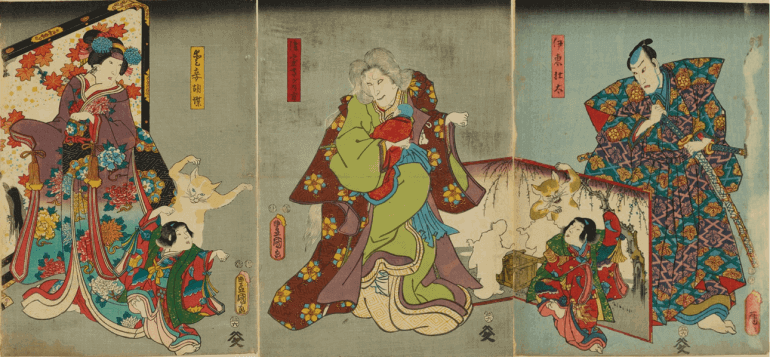
In the Edo period, there is a terrifying legend of Bakeneko in the Saga Domain. The second lord of the Saga Domain, Nabeshima Mitsushige, had a retainer who served as his Go opponent. One day, this retainer angered Mitsushige and was killed. The retainer’s mother, stricken with grief, told her cat about her sorrow and took her own life. The cat, after licking her blood, was possessed by her vengeful spirit and transformed into a Bakeneko, sneaking into the castle and tormenting Mitsushige every night.
Amidst this terror, Mitsushige’s loyal retainers stood up and finally managed to slay the Bakeneko. Thus, the Nabeshima family regained their peace, and this event came to be known as “The Nabeshima Disturbance.”
This frightening story of the Bakeneko was later depicted in the kabuki play “Hanano Saga Nekomata Zoshi” and widely told through factual records and storytelling. The legend, which once terrified the people of the Saga Domain, still remains in the hearts of many. The next time you visit Saga, why not ponder this legend? You might just see the shadow of the Bakeneko in the castle at night.
Place Names Associated with Nekomata
Due to the widespread belief in Nekomata legends across Japan, there are places where “Nekomata” has even become part of the place name. Here are a few examples of such place names.
Nekomatayama
Nekomatayama in Toyama Prefecture is a mountain with an elevation of 2,378 meters, part of the Kekachisanzan range, straddling Uozu City and Kurobe City. There is an interesting legend behind the name of this mountain. It is said that a Nekomata once lived in the mountains of Kurobe, and after being pursued by people, it hid in this mountain. The Nekomata was a large cat that sometimes attacked people, and it was feared by the local residents.
Moreover, along the Kurobe River, there are places like Nekomata Station and Nekomatadani, named after the Nekomata. The presence of these names in the region gives credibility to the existence of the Nekomata, leading some to believe it actually existed. Nekomatayama is known to many as a place that evokes the legends and history associated with its name.
Nekomata Station and Nekomatadani

Near the Kurobe River in Kurobe City, Toyama Prefecture, there are several place names related to Nekomata. One of these is Nekomata Station. This station is part of the Kurobe Gorge Railway, and although it is on a track used exclusively by Kansai Electric Power Company and not accessible to the general public, its existence reflects the history and legends of the region.
Nekomata Slope
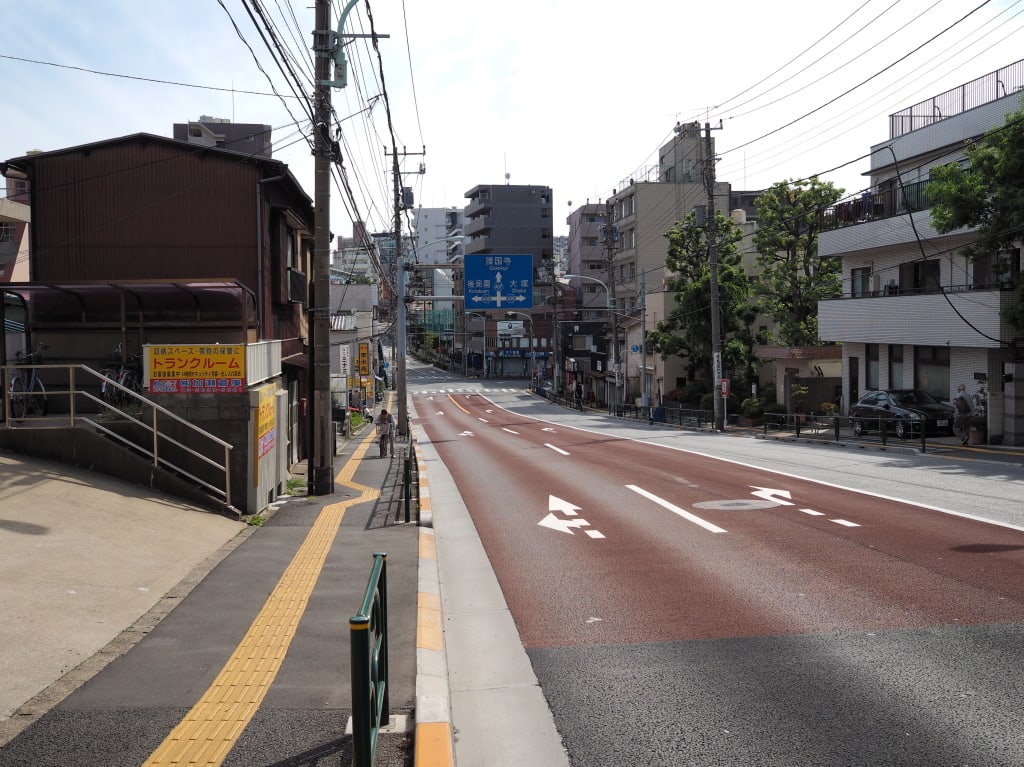
Next is Nekomata Slope in Tokyo. Nekomata Slope is a place where the legend of Nekomata is strongly preserved. As you descend this slope, you come to Koishikawa, where the “Nekomata Bridge” is built. This bridge, made using tree roots, is called “Nekomata Bridge.” This area is rich with legends of Nekomata, including stories of cats dancing with hand towels and people being chased by cats.
The name “Nekomata Slope” is derived from these legends. Visiting Nekomata Slope allows you to ponder the mysterious tales of Nekomata while soaking in the old-time atmosphere. This place, where legend and history intersect, is an intriguing spot for many people.
Nekomagadake
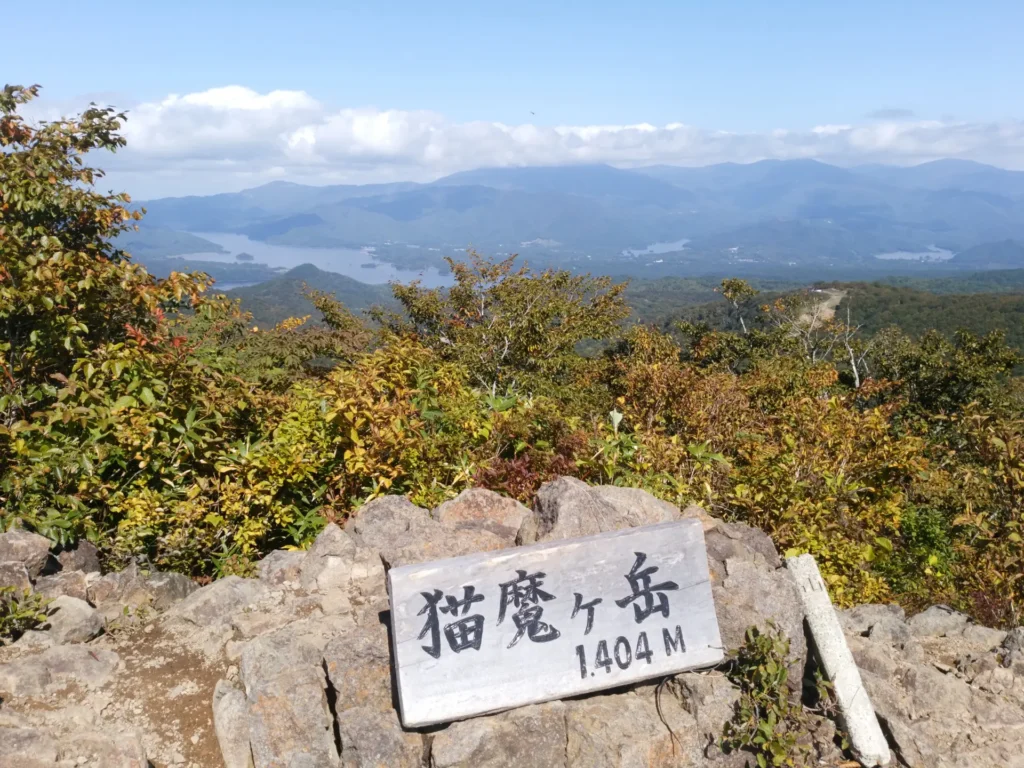
Nekomagadake in Aizu, Fukushima Prefecture (approximately 1,404 meters in elevation), is a mountain steeped in Nekomata legends. It is said that a mountain cat once lived on this mountain and descended to attack humans. However, this mountain cat was also revered as a deity and believed to have protective powers against disasters.
At the nearby Bandai Shrine, disaster-prevention talismans featuring drawings of the mountain cat were sold until the Edo period, attracting many visitors who sought the blessings of these charms. Nekomagadake, with its name, continues to convey the legends of Nekomata and the mystical powers of the mountain cat. Visiting this area allows you to feel the awe and reverence that people of the past experienced.
Do You Want Your Cat to Become a Nekomata?
When you look online, you might notice a lot of searches and posts saying “I want my cat to become a Nekomata.” What kind of request is this? Upon closer inspection of these posts, you’ll find that they don’t really want their cats to become mysterious yokai with split tails and strange powers.
The wish for a cat to become a Nekomata comes from cat owners. They are not hoping for their cats to actually transform into Nekomata; rather, they wish for their beloved cats to live long enough to become one. Since it is believed that a cat must live for about 20 years to become a Nekomata, the expression “I want my cat to become a Nekomata” reflects the owners’ deep affection and desire to spend as much time as possible with their cherished pets.
Summary
How was it? This time, we introduced Nekomata. Nekomata are mystical yokai that appear in Japanese folklore, believed to be cats that have lived for a long time or wild mountain cats that have transformed with age. It is believed that cats that live a long life develop mysterious abilities, such as their tails splitting into two and being able to speak human language. While Nekomata could bring misfortune to people, their existence also symbolizes the mysterious allure and power of cats, and their stories have been passed down in various forms across different regions. These yokai legends highlight the significance and charm of cats in Japanese culture.



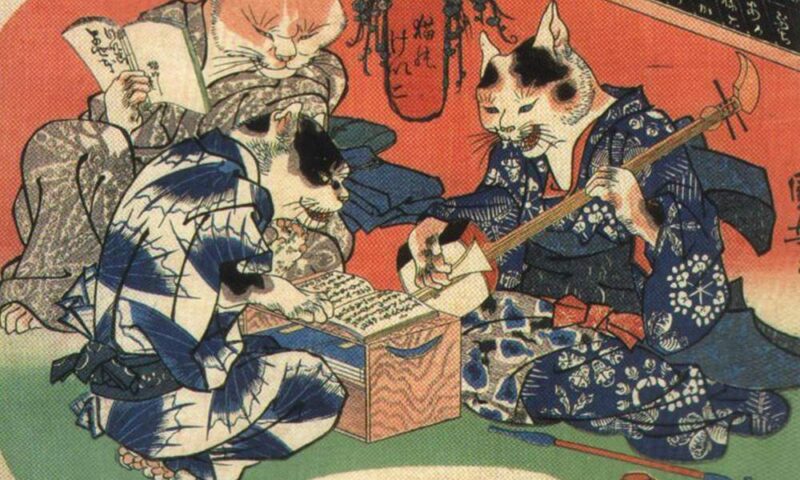
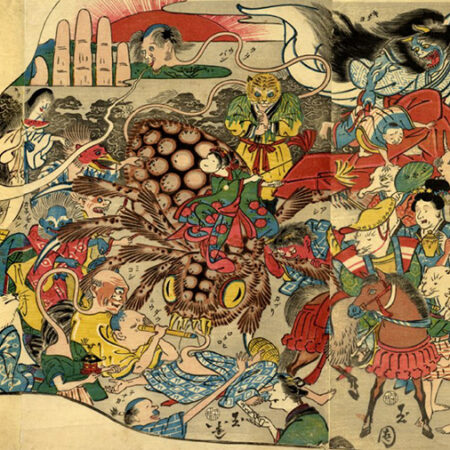

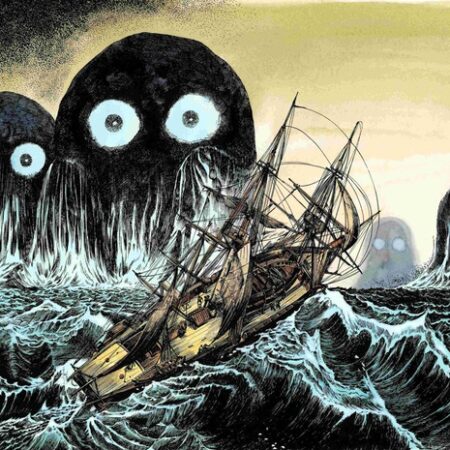
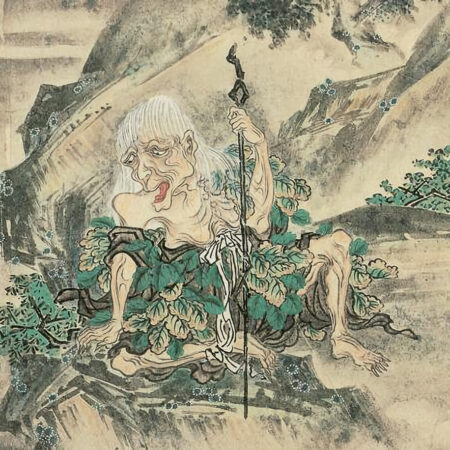
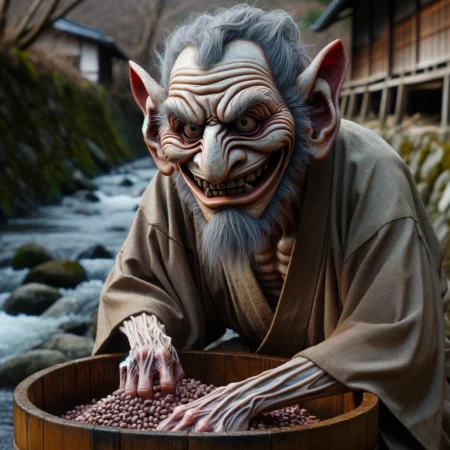
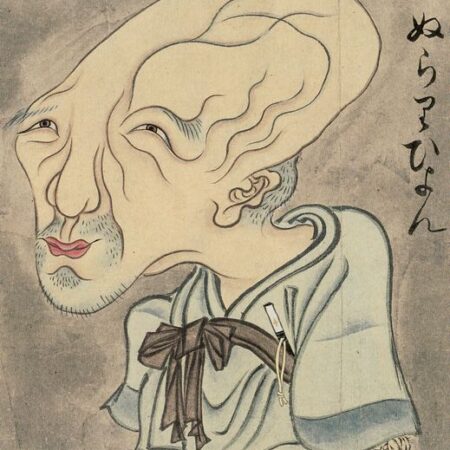

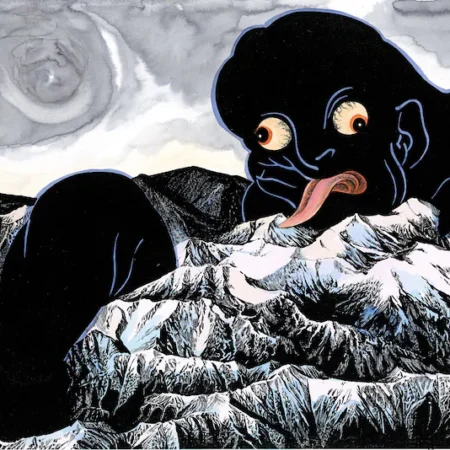


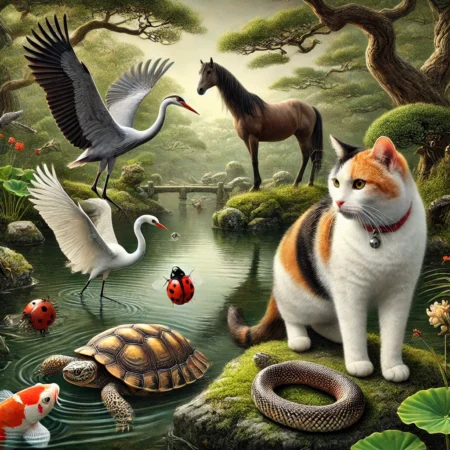
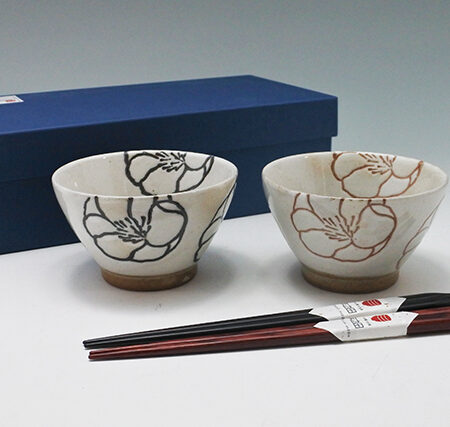
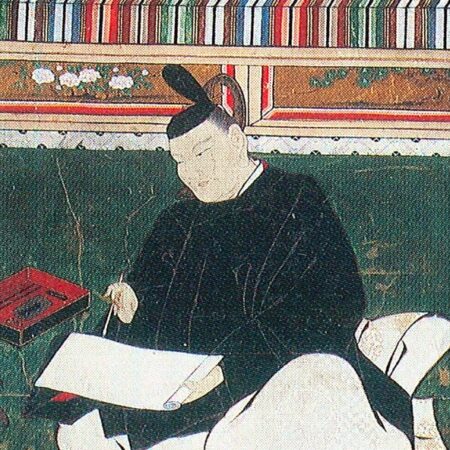
コメント